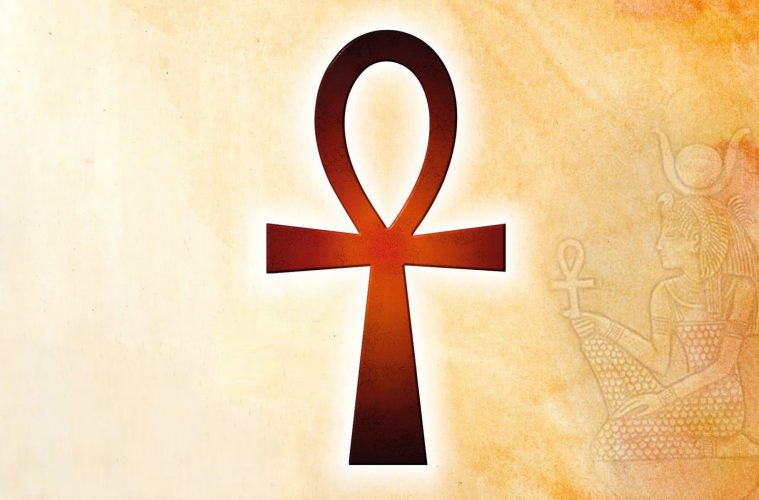
The Ankh, which is essentially a cross with a circle on the top as pictured above, is definitely one of the most recognized symbols from Ancient Egypt. Also commonly known as the “cross of life” or “the key of life,” the special symbol can be dated back to the Early Dynastic Period, ranging from c. 3150 – 2613 BCE.
The cross is often depicted as a simple plain gold cross with a loop on top, it was recognized as an Egyptian hieroglyph, which was translated to mean “life” or “breath of life.” The Egyptians believed that their time here on Earth was merely just a part of a larger eternal life, as the ankh symbolizes both the after life and a mortal existence on earth.
The ankh is often depicted with other ancient Egyptian symbols such as the djed and the was and was carried by various Egyptian gods in hieroglyphs and tomb paintings. Egyptians also commonly wore this cross as an amulet around their necks.
Unfortunately, the exact origin of the ankh is unknown, however, Egyptologist Sir Alan H. Gardiner (1879 – 1963) believed that this symbol originated from the strap of a sandal with the top loop going around the ankles and the vertical post attached to the sole at the toes. He discovered this possibility upon the understanding that the Egyptian word for sandal was actually “nkh,” which isn’t really that far of a stretch, although this story has never been validated or gained any support.
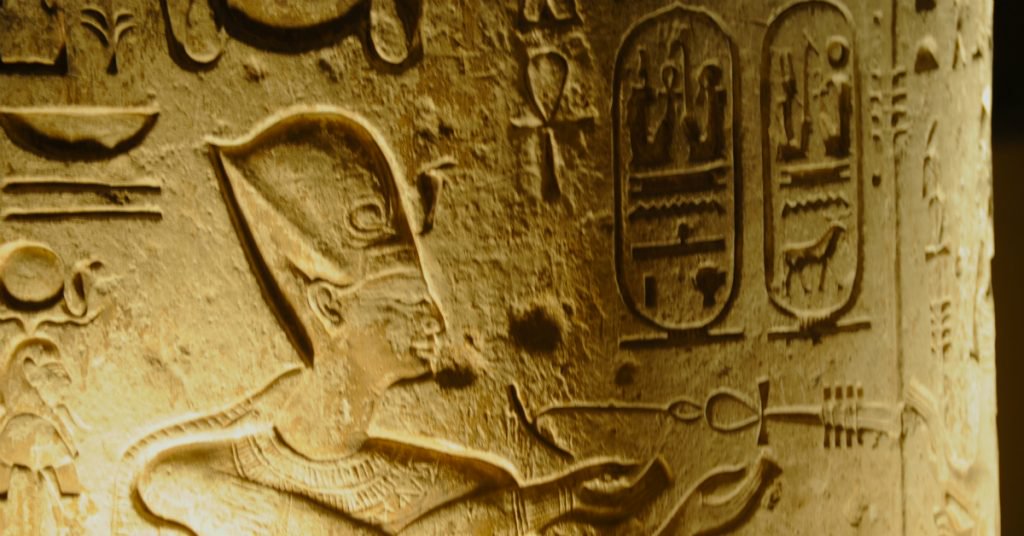
Another Egyptologist, Wallis Budge (1857-1934 CE) believed that it originated from the belt buckle of the goddess Isis, which might be more of a probability but is still not an accepted theory. The ankh with the tjet, the “knot of Isis,” was a ceremonial girdle which was believed to represent the female genitalia and thus fertility. The idea that the origin of the ankh stems from a symbol of fertility seems to make the most sense throughout ancient Egyptian history.
According to Scholar Adele Nozedar,
The volume of meaning that can be squeezed from such a simple symbol is awe-inspiring. The ankh represents the male and female genitalia, the sun coming over the horizon, and the union of heaven and earth. This association with the sun means that the ankh is traditionally drawn in gold – the color of the sun – and never in silver, which relates to the moon. Putting aside the complexities of these separate elements, though, what does the ankh look like? Its resemblance to a key gives a clue to another meaning of this magical symbol. The Egyptians believed that the afterlife was as meaningful as the present one and the ankh provided the key to the gates of death and what lay beyond.
When we see the images of the gods of Egypt holding the ankh, it is more often than not held by the goddess, Isis, who was revered to be the most popular goddess in Egypt, holding the symbol.
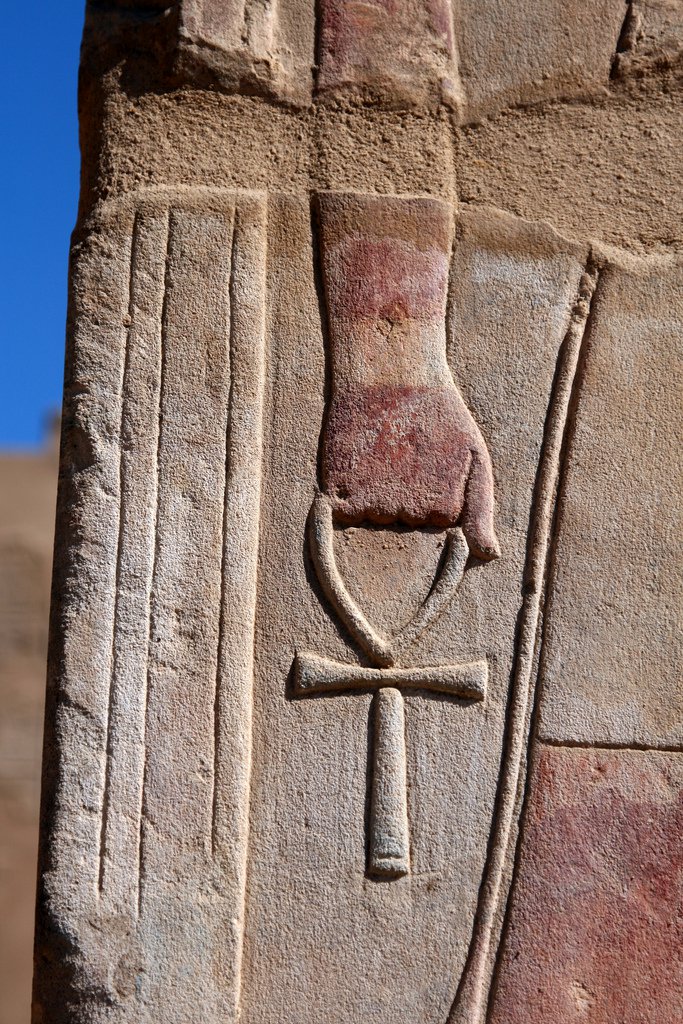 Regardless of the exact understanding of this symbol it has always been associated with life, the sun, fertility, light and the promise of eternal life.
Regardless of the exact understanding of this symbol it has always been associated with life, the sun, fertility, light and the promise of eternal life.
As A Symbol Of Fertility
The loop of the ankh represents the vagina and the line below it represents the penis in union with the vagina, thus this represents the creation of new life. The ankh is a man and a woman in a perfect union and harmony and when this happens, a new life is born. The stretching out ‘arms’ of the ankh is also believed to represent the children that are created from the union of the male and female.
A Symbol Of Spirituality
The ankh has also often represented a key, from the viewpoint of the loop down this symbol represents the key to all hidden knowledge. It also symbolizes the eternal aspect of the soul as it has no beginning or end.

Inspiration and all our best content, straight to your inbox.
As A Symbol Of The Afterlife
In the numerous tomb paintings and inscriptions where this symbol is found, deities such as Anubis or Isis are depicted placing the ankh against the lips of the soul in the afterlife in order to revitalize and open that soul to a life after death. Ma’at is another goddess who is also often depicted holding one ankh in each hand, even Osiris is seen holding onto the ankh in a number of tomb paintings. Because the ankh was so often depicted with various gods and goddesses it became a predominant symbol on caskets, amulets, placed in tombs and on sarcophagi.
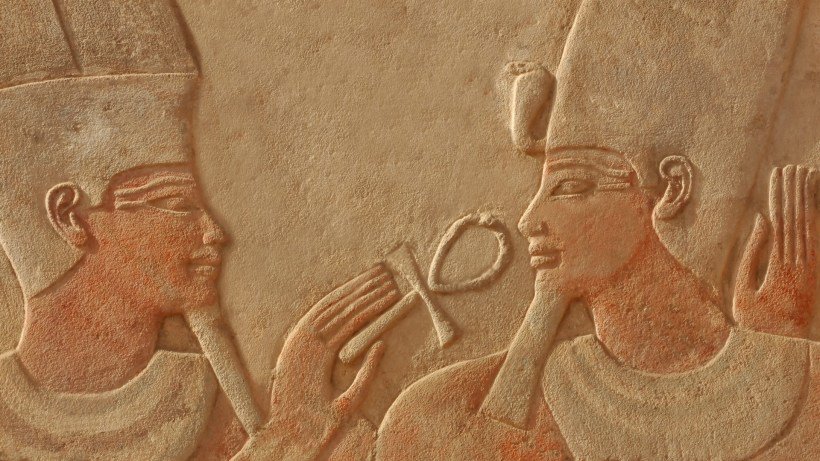
“Life, Prosperity and Health”
This was a common phrase in ancient Egypt, lovely, isn’t it? It was regularly written after the names of kings and was also almost always written at the end of letters.
How Has The Ankh Been Used Throughout History?
The ankh and what it stood for was important because of its meaning. Even the many people who could not read could understand the symbolism of objects and what they represented. During the time of the Old Kingdom the ankh was well-established as a symbol of eternal life.
Historian Margaret Bunson concluded that the representation of the ankh as an amulet was worn in life and carried to the grave because,
Called wedjau, the amulets were made out of metal, wood, faience, terracotta, or stone and believed to contain magical powers, providing the wearer with supernatural benefits and charms. The potential power of the amulet was determined by the material, color, shape, or spell of origin. Living Egyptians wore amulets as pendants and the deceased had amulets placed in their linen wrappings in their coffins. Various styles of amulets were employed at different times and for different purposes. Some were carved as sacred symbols in order to attract the attention of a particular deity, thus ensuring the god’s intercession and intervention on behalf of the wearer.
What Happened To The Ankh?
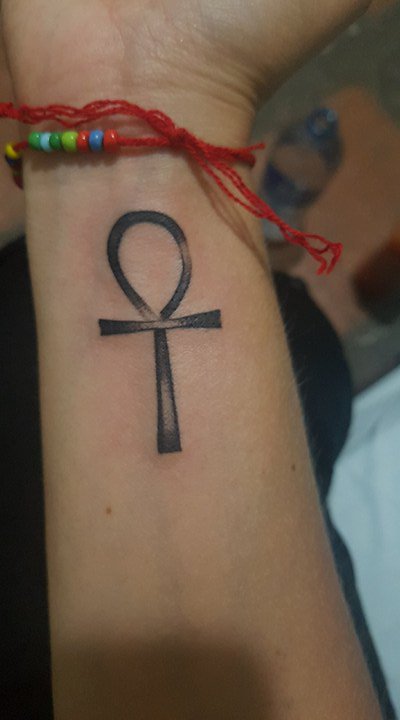 Well, like a lot of Ancient Egyptian lore, that remains unknown. Many believed that it was taken and changed by the Catholic Church, eventually becoming known as the cross we see so commonly today. The ankh does live on however, as many people have resurrected this symbol and tattooed it on their body, including very recently, myself! It’s a beautiful symbol and just happened to show up very vividly during an ayahuasca ceremony I recently attended at Rythmia Life Advancement Center, which is the first medically licensed and supervised ayahuasca center in the world. Funny, because I was hoping to get some inspiration and when I saw it, and then researched the meaning, I felt compelled to have it on my body.Much Love
Well, like a lot of Ancient Egyptian lore, that remains unknown. Many believed that it was taken and changed by the Catholic Church, eventually becoming known as the cross we see so commonly today. The ankh does live on however, as many people have resurrected this symbol and tattooed it on their body, including very recently, myself! It’s a beautiful symbol and just happened to show up very vividly during an ayahuasca ceremony I recently attended at Rythmia Life Advancement Center, which is the first medically licensed and supervised ayahuasca center in the world. Funny, because I was hoping to get some inspiration and when I saw it, and then researched the meaning, I felt compelled to have it on my body.Much Love
The Shamanic Way of Healing
The Sacred Science follows eight people from around the world, with varying physical and psychological illnesses, as they embark on a one-month healing journey into the heart of the Amazon jungle.
This incredible true story details how ancient shamanic healing methods can work to shift our bodies and minds. here.
Read the incredible true story here.
The Shamanic Way of Healing
8 people with illnesses go into the jungle to heal naturally… read the incredible true story here.
Source Article from http://feedproxy.google.com/~r/Collective-evolution/~3/KI26TQzkFlI/
Related posts:
Views: 0
 RSS Feed
RSS Feed















 April 5th, 2018
April 5th, 2018  Awake Goy
Awake Goy 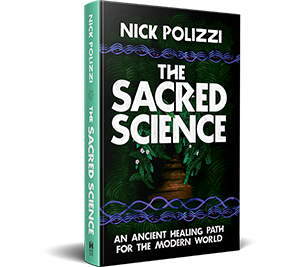
 Posted in
Posted in  Tags:
Tags: 
















